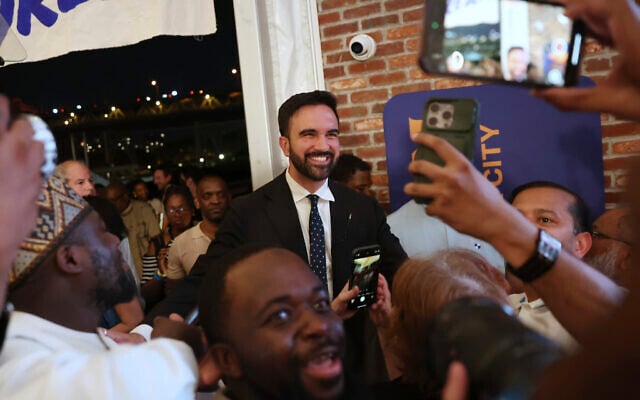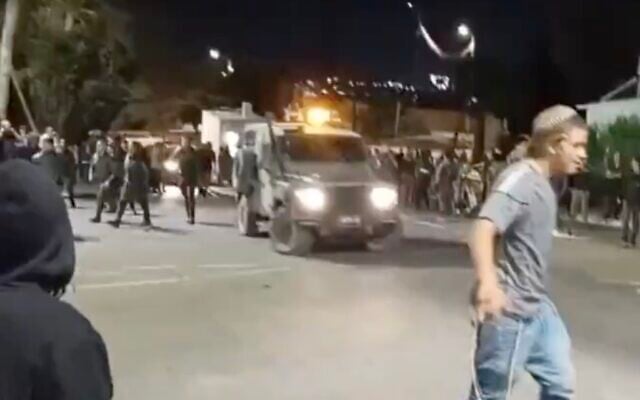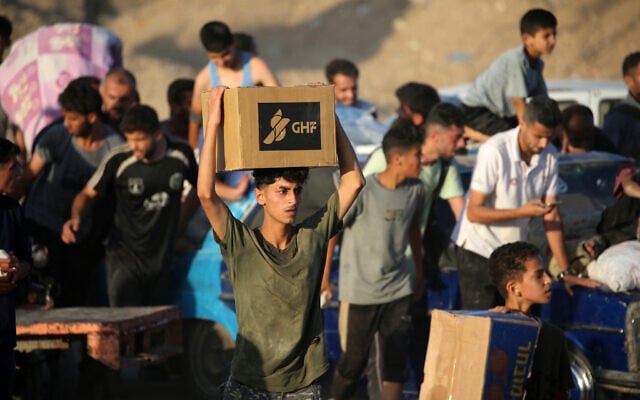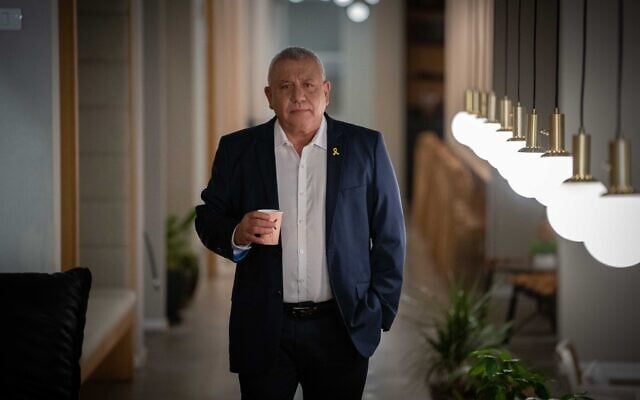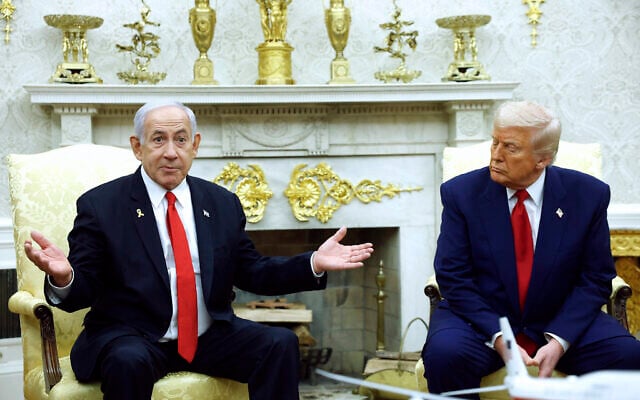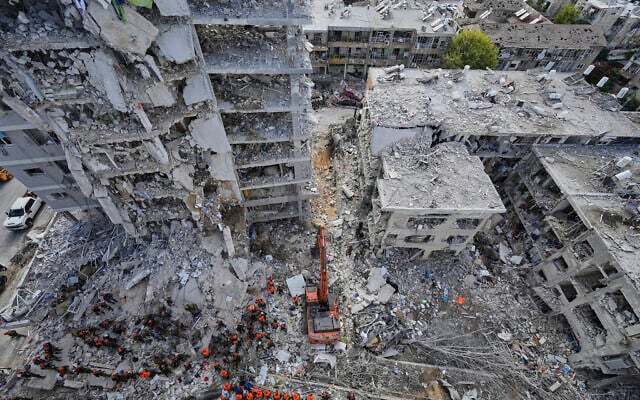


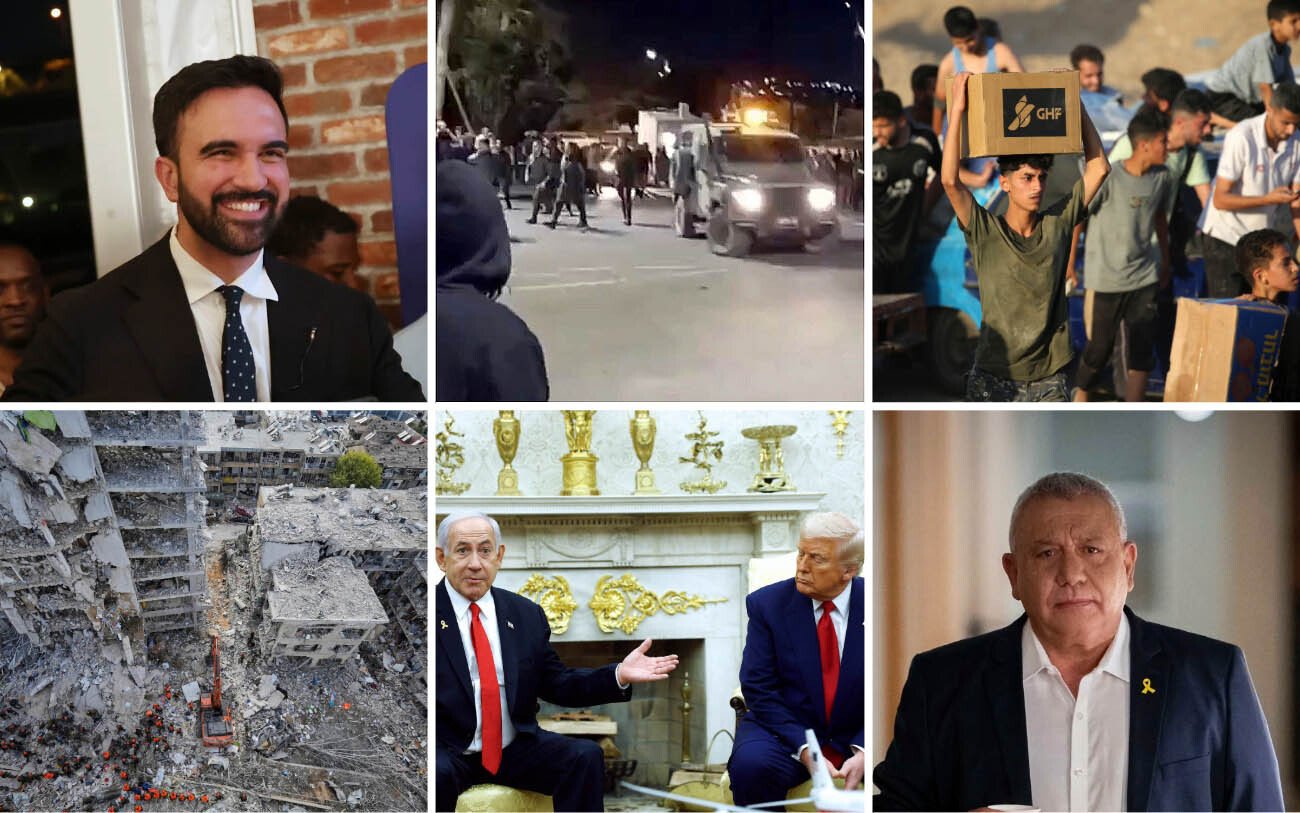
This Editor’s Note was sent out earlier Wednesday in ToI’s weekly update email to members of the Times of Israel Community. To receive these Editor’s Notes as they’re released, join the ToI Community here.
While we were in the bomb shelters for 12 days of war with Iran…
1. A malevolent would-be mayor
Hundreds of thousands of New Yorkers chose state assemblyman Zohran Mamdani as the Democratic Party’s candidate for mayor, evidently undeterred by his opposition to Israel’s right to exist as a Jewish state, his despicable initial response to Hamas’s October 7 invasion and massacre in southern Israel, and his indulgence of calls to “globalize the intifada” — as in, kill Jews everywhere. This, in the city with the world’s largest Jewish population.
Israelis who lived through the Second Intifada — a relentless, strategic Palestinian onslaught of suicide bombings and other terror attacks, targeting buses, markets, pedestrian crossings; anywhere and everywhere we were, day after day after day, killing about 1,000 men, women and children — will never forget it. (My esteemed colleague Bret Stephens, who lived through it in Jerusalem, today provided a reminder in the New Yok Times for those with shorter memories.)
It scarred this nation to its soul. It was and is indefensible. And anybody who aspires to run for office anywhere, and is unwilling to oppose its global export, has no moral legitimacy. Is this what New Yorkers want for their city?
2. Violence unconstrained
Settler extremists who have carried a stream of near-daily attacks on Palestinian civilians in the West Bank, almost entirely without arrest, punishment or government denunciation, turned their attention to the IDF — attacking soldiers, rioting at an army base, and torching a security installation that exists for their own protection.
Finally stirred into issuing statements of condemnation, the government vowed to curb the violence against the army, but gave no indication of a perceived imperative to thwart the attacks on Palestinians. Vowing no tolerance of “serious incidents,” Defense Minister Israel Katz announced the establishment of a joint IDF, Shin Bet and police task force.
That would be the same police force led by serial anti-Arab inciter “National Security Minister” Itamar Ben Gvir. And the same Katz one of whose first acts when appointed defense minister was to bar the use by the IDF and Shin Bet of the tool of administrative detention — preventive arrests designed to avert acts of violence and terrorism — against Jewish settlers.
3. Deadly aid
The IDF finally acknowledged that it has killed “several” Gazan civilians seeking to reach aid distribution hubs set up by the Israel-backed Gaza Humanitarian Foundation. It also said it had learned the lessons of such incidents, and taken steps to avoid their recurrence.
Hundreds of Gazans have been reported killed in the month since the GHF, at Israel’s request, began distributing aid in Gaza in an effort to get food and essential supplies to Gazan noncombatants without it being commandeered by Hamas.
The death toll is unverifiable, and both the IDF and the GHF have stated that Hamas has been killing Gazans seeking to reach the aid hubs in a typically cynical effort to doom the project and maintain its stranglehold on the Strip.
But it beggars belief that it took the IDF a month to acknowledge its failure to enable non-deadly access to the aid supplies it is charged with protecting. That it failed to establish access routes that do not send tens of thousands of Gazans into close proximity with troops inexperienced in crowd control and understandably concerned for their own safety. That, by the IDF’s own belated admission, soldiers resorted to live fire, including tank shells.
Beggars belief that, even after the IDF’s acknowledgment and its claim to have learned the necessary lessons, the toll is still reportedly rising.
4. It’s all about the blocs
Gadi Eisenkot, a former IDF chief of staff who has lost his son and two nephews in the war against Hamas in Gaza, geared up to sever his political partnership with his predecessor as IDF chief, Benny Gantz.
Few politicians come close to matching Eisenkot’s evident integrity and commitment to genuine public service. But that may prove inadequate when it comes to realizing his stated desire to shake up the political system by putting together a “Zionist, patriotic, statesmanlike and democratic” alternative to the Netanyahu-led coalition.
First polls after he announced he was resigning from Gantz’s National Unity party showed that Eisenkot as a potential party leader would win 7-9 Knesset seats, the same kind of score Tel Aviv’s Mayor Ron Huldai mustered when launching his instantly forgotten “The Israelis” party in 2020.
At a press conference on Tuesday evening, Eisenkot made clear he’s much less interested in leading a new party than in unifying existing and fresh forces to defeat Netanyahu, who he said needs to resign along with any and all figures centrally culpable for the failures of October 7, 2023.
Those first polls also showed, however, that Eisenkot’s breakaway would have no significant effect on the balance of support between pro-Netanyahu and anti-Netanyahu parties. The anti-Netanyahu bloc is hovering at around 60 seats in the 120-member Knesset, with the current coalition parties at about 50. If that looks bad for Netanyahu, the prime minister would disagree. He’s won elections from worse positions, he’s survived 20 months of pressure to resign since October 7, and he’s resisted establishing the state commission of inquiry into the catastrophe that would bury him politically.
Watching the earnest, non-strident Eisenkot deliver his opening pitch to the nation on Tuesday night, Netanyahu would not have been troubled. An increasingly splintered opposition? With the prospect of one or more of the parties hostile to him falling below the Knesset threshold, and sending vast numbers of votes down the drain, as happened in 2022 to ease his election win? “Thank you, Gadi,” the PM would have been saying. “Bring it on.”
5. The third surprise?
US President Donald Trump kept pushing for an end to the Gaza war and the release of all the hostages, even as the US was helping to defend Israel from Iran’s ballistic missiles and bombing key Iranian nuclear sites.
Having ordered an end to the Iran war, Trump is now set to host Netanyahu at the White House next week — for the third time in the barely five months he’s been in office.
The first visit saw him unveil his Gaza vision — the forced relocation of all Gazans to better places elsewhere, and the US transformation of the emptied Strip into a real estate opportunity, an unbaked idea, endorsed by Netanyahu and beloved of the far right, that the president has semi-walkedback, semi-abandoned.
The second visit saw him deliver his “we’re having direct talks with Iran” bombshell, with Netanyahu struggling to mask his dismay — a 60-day initiative that Iran arrogantly and self-defeatingly chose not to utilize and that ended with Israel’s resort to force against the regime’s nuclear and ballistic missile capacities.
It would appear that the focus is returning to Gaza with next week’s third visit, with Trump promising to be “very firm” with Netanyahu on ending the war while vouchsafing that Netanyahu “wants it too.”
Netanyahu, who pushed for the visit, could be hoping to revive the so-called Witkoff initiative for a 60-day truce and the release of as many hostages as possible while dodging a binding commitment to end the war. Or he might be ready to assert that the war’s twin key goals — of destroying Hamas and securing the return of all the hostages — are at hand and can be fulfilled via a Trump-endorsed agreement.
This might, in turn, lead to the collapse of his coalition, but elections are not much more than a year away anyhow, the Haredim are again issuing ultimatums about legislation to keep them out of the IDF, and Netanyahu may feel his prospects of election success are much boosted by the Iran war, with his Likud party steadily growing at the expense of the far right, and perpetual disarray in the opposition.
Trump is unknowable, however, and also capable, for instance, of advancing an entirely different agenda — producing from a side office, say, a “young, attractive, tough guy” Arab leader for the kind of groundbreaking handshake that confounds all expectations.
6. After the ayatollahs
And finally, while we were in the bomb shelters, the IDF and security establishment took major strides toward rebuilding their deterrent capabilities and their domestic credibility from the lows of October 7. (An Israel Democracy Institute poll released on Wednesday showed 84% of the public trust the IDF very much or quite a lot, and 68.5% feel the same about IDF Chief Eyal Zamir 68.5%. Netanyahu got 40%.)
Thirty-six Iranian ballistic missile impacts, 28 Israelis dead, 2,000 buildings destroyed or damaged, a hospital, two universities and an oil refinery smashed, and 13,000 people displaced is anything but peerless.
But it’s also a fraction of the harm the ayatollahs were intending to inflict had the IDF not mounted its spectacular, US-backed assault on the regime’s nuclear project, its missile capabilities, and its military commanders.
The Iranian regime was openly enriching uranium to levels beyond any civilian application. It did its best to render known facilities impregnable, to establish others clandestinely and to stymie UN inspectors. It drastically expanded its ballistic missile production, advanced those missiles’ deadly capabilities, and worked to expand their range beyond Israel, to Europe, with the US as its eventual goal. Farcically, while continuing to openly seek the destruction of Israel, it now presents itself as the injured party — a blameless victim of unprovoked Israeli and US aggression.
We don’t yet know the full extent of the damage achieved during the 12 days of war. Out of the bomb shelters for now, we know that there can be no long-term security for Israel, or anybody else for that matter, so long as that regime retains power.

